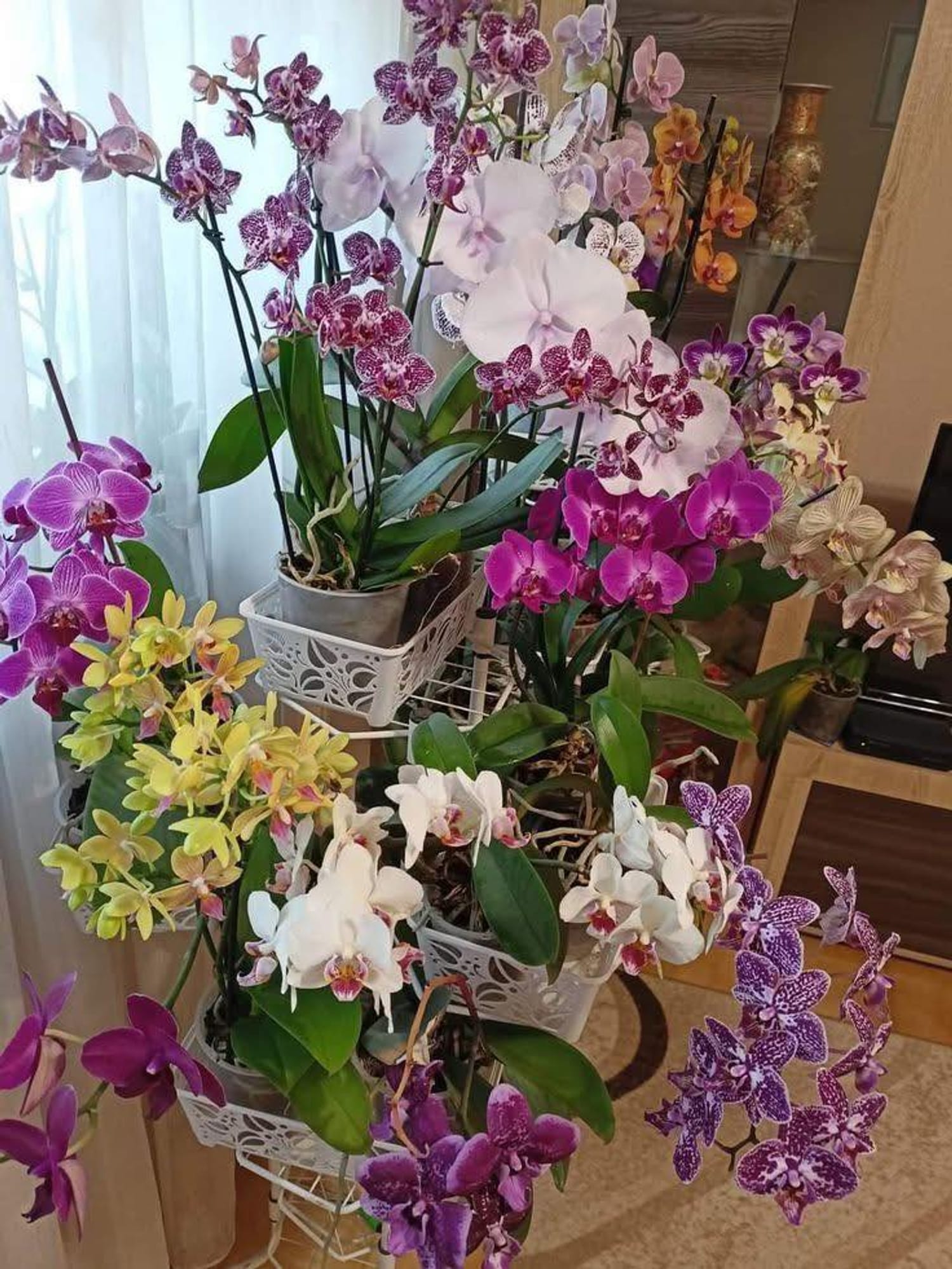Orchids are some of the most beloved and delicate plants to have in your home or garden. With their stunning flowers and elegant shape, orchids make a beautiful addition to any space. However, they can also be a bit temperamental. If not cared for properly, they can easily wilt, lose their vibrancy, or even appear to be dying. Fortunately, there’s a simple trick that can help bring your orchid back to life instantly with just one drop.
In this blog, we’ll explore the 1-drop trick that can restore any orchid plant, how to care for your orchids, the common mistakes to avoid, and how you can revive other plants in your garden as well.
The Power of the 1-Drop Trick
The 1-drop trick involves a simple yet powerful method using a few common household items, such as a drop of hydrogen peroxide or liquid fertilizer. When applied properly, this trick can provide an instant boost to your orchid and even help revitalize other plants in your collection.
Why Does It Work?
Orchids are sensitive to the environment, and any imbalance in moisture, light, or nutrients can cause them to wilt or stop blooming. Hydrogen peroxide, for example, is a natural disinfectant that helps kill harmful bacteria or fungi that may be inhibiting your plant’s growth. Additionally, it introduces oxygen into the soil, helping the roots breathe, which can stimulate growth.
On the other hand, a high-quality liquid fertilizer or orchid-specific nutrient mix is designed to deliver essential nutrients directly to the plant’s roots, rejuvenating its health and encouraging blooms. When used in moderation, this can provide a quick nutrient boost, especially if the plant has been struggling to thrive.
Step-by-Step Guide to Reviving Your Orchid with the 1-Drop Trick
What You’ll Need:
A drop of hydrogen peroxide (3% solution) or liquid orchid fertilizer.
A small watering can or syringe for precision.
A healthy, well-draining orchid potting mix.
Optional: A clean cloth or cotton swab.
Step 1: Assess Your Orchid’s Condition Before applying the 1-drop trick, take a close look at your orchid. Check the roots, leaves, and stem for any signs of disease, pests, or overwatering. This trick works best if your orchid is simply a bit stressed or undernourished, rather than suffering from a major issue like root rot. If your plant has rotting roots or yellowing leaves, you may need to address those problems before attempting the trick.
Step 2: Prepare the Hydrogen Peroxide or Fertilizer If you’re using hydrogen peroxide, mix one part hydrogen peroxide (3% solution) with three parts water to dilute it. If you’re using liquid fertilizer, follow the manufacturer’s instructions for dilution.
Step 3: Apply the Drop Use a small syringe, dropper, or even a cotton swab to apply just one drop of your solution near the base of the orchid, directly to the roots or soil surface. Be cautious not to overdo it, as too much fertilizer or hydrogen peroxide could damage the roots.
Step 4: Water Lightly After applying the drop, water the orchid lightly. Make sure the water drains properly from the pot. This will help distribute the solution evenly throughout the roots, providing hydration and nutrients to your plant.
Step 5: Monitor Your Orchid’s Response After applying the drop, keep an eye on your orchid over the next few days. You may notice signs of revival, like the plant standing up straighter, new growth appearing, or blooms beginning to form. Be patient, as some orchids may take a little longer to show results.
Tips for Orchid Care: Keeping Your Plants Thriving
While the 1-drop trick can work wonders for reviving your orchids, proper care is essential for keeping them healthy in the long run. Here are some tips for orchid care to ensure they flourish:
1. Lighting:
Orchids require bright, indirect light. Direct sunlight can scorch their leaves, while too little light will inhibit blooming. Place your orchids near a window with filtered sunlight or use artificial grow lights to mimic their natural habitat.
2. Watering:
Water your orchid only when the potting mix is dry to the touch. Orchids prefer to dry out between waterings to avoid root rot. Use a well-draining pot and ensure there’s a hole at the bottom for excess water to escape. Water early in the day to prevent water from sitting in the pot overnight.
3. Humidity:
Orchids thrive in high humidity. If the air in your home is dry, consider placing your orchid on a humidity tray or using a humidifier nearby. Misting your orchid lightly can also help, but avoid over-wetting the leaves, which can lead to fungal problems.
4. Fertilizing:
Orchids need regular fertilizing to thrive. Use a balanced orchid fertilizer, ideally once a month during the growing season (spring and summer), and reduce feeding during the dormant season (fall and winter). Over-fertilizing can lead to salt buildup, which can damage roots.
5. Repotting:
Repot your orchid every 1-2 years to refresh the potting mix and give the roots more space to grow. This is also an opportunity to check for any signs of root rot or pests.
Common Mistakes to Avoid When Caring for Orchids
While orchids are relatively easy to care for once you know the basics, many people make a few common mistakes when growing them. Here are some pitfalls to avoid:
Overwatering: Orchids are more likely to suffer from root rot than drought. Be mindful of how often you water and ensure your orchid’s pot has good drainage.
Improper Potting Mix: Use a well-draining orchid mix, typically consisting of bark, perlite, and sphagnum moss. Regular potting soil is too dense and will hold too much moisture.
Incorrect Temperature: Orchids prefer moderate temperatures. They do best in a range between 60°F and 75°F (16°C to 24°C). Avoid placing them in drafts, near heat vents, or in rooms that fluctuate too much in temperature.
Reviving Other Plants with the 1-Drop Trick
While this method is particularly effective for orchids, you can use the 1-drop trick to revive other types of plants as well. Whether you’re trying to save your ferns, houseplants, or even garden flowers, hydrogen peroxide and diluted fertilizer can be an excellent tool for restoring life to stressed plants. Apply the solution directly to the roots or soil, and water lightly to give the plant a boost.
Conclusion
The 1-drop trick is a simple yet highly effective way to revive your orchids and other plants. By providing a quick nutrient boost or helping to eliminate harmful bacteria, this method offers a fast way to rejuvenate your plants and help them thrive again. However, remember that the trick is not a substitute for proper care. Understanding your plant’s needs and providing consistent care is key to keeping your orchids in their prime.
With just a little patience and attention, you can watch your orchids flourish and bring beauty to your home or garden for years to come! So, next time your orchid looks like it’s on its way out, try the 1-drop trick and see how quickly it can come back to life.
More Articles You Might Like
-
Amaretto Island Punch
If you’re looking for a cocktail that tastes like a beach vacation and looks like a tropical sunset, Amaretto Island Punch is your ticket to paradise. This fruity, smooth, and deceptively strong drink is everything you want in a summer cocktail—layered flavors, island vibes, and a showstopping presentation. Whether you’re sipping poolside, serving guests at…
-
Malted Chocolate Malteser Cheesecake
There are desserts that turn heads at parties—and then there’s Malted Chocolate Malteser Cheesecake, a no-bake showstopper that’s just as indulgent as it sounds. With a crunchy malted biscuit base, a luscious chocolate malt mousse-like filling, and a glossy topping of melted Malteser chocolate and whipped cream, this cheesecake is as much about flavor as…
-
Dump and Bake Meatball Casserole
If your family loves hearty pasta dinners but you’re short on time (and patience), this Dump and Bake Meatball Casserole is about to become your new favorite recipe. It’s the definition of no-fuss comfort food—just dump everything in a pan, bake it, and dinner is served. No boiling pasta, no cooking meatballs beforehand, and minimal…



